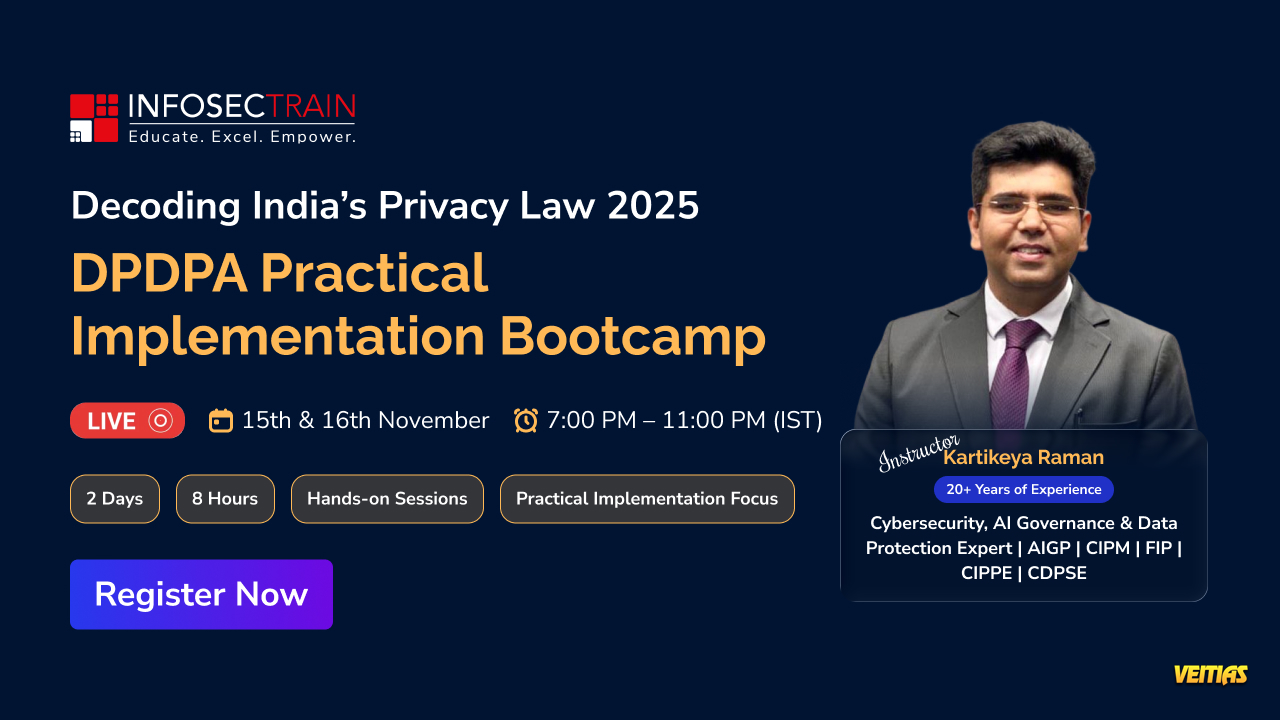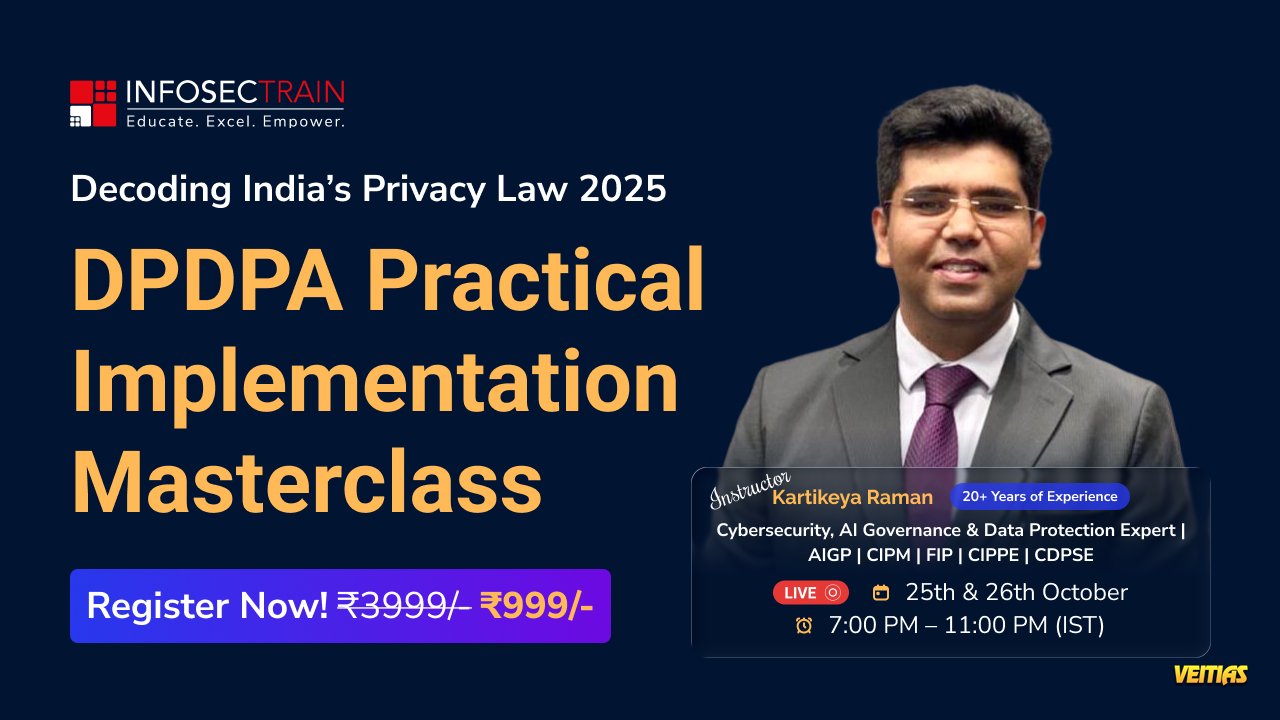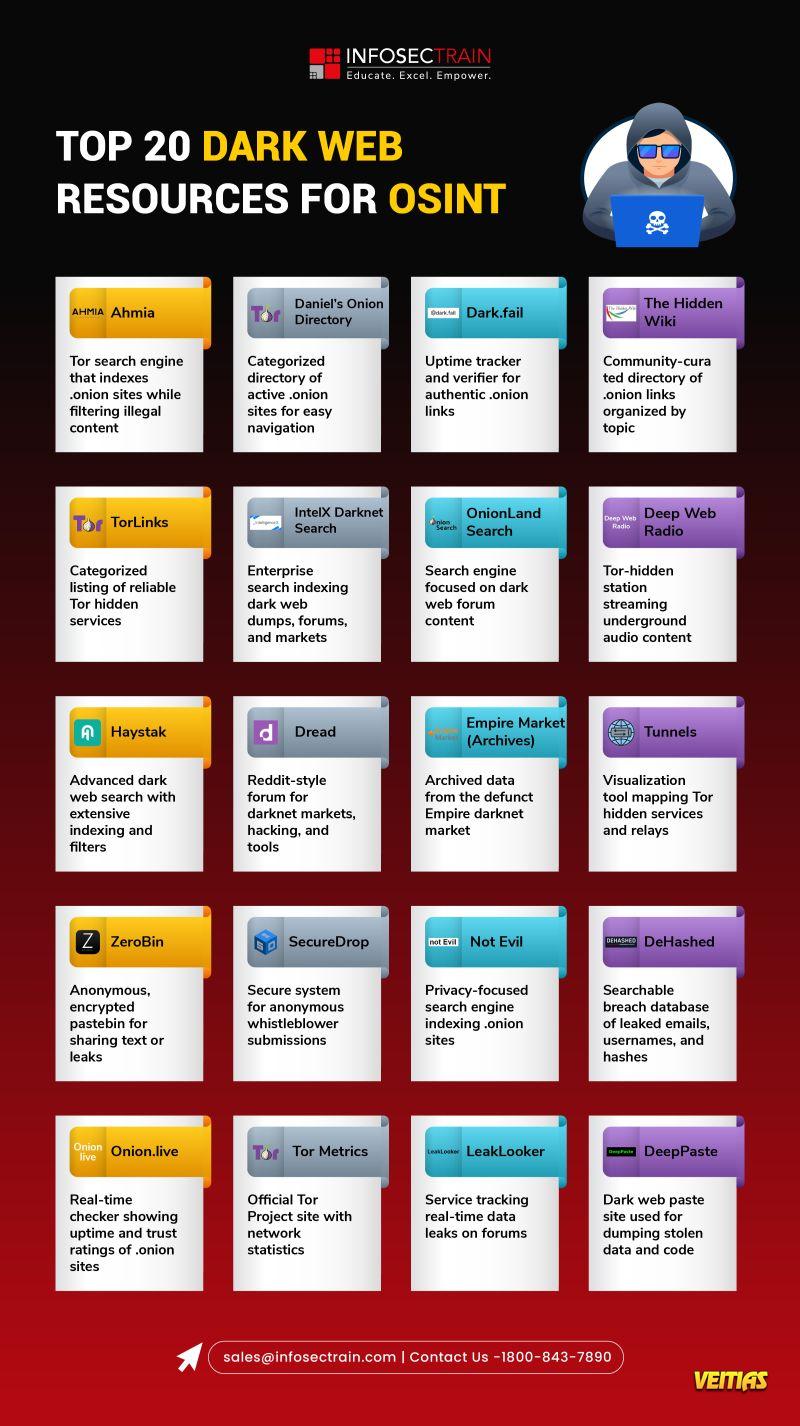Decoding India’s Privacy Law 2025: DPDPA Practical Implementation Bootcamp
Date: 15th & 16th November
Time: 7 PM – 11 PM (IST)
Speaker: Kartikeya Raman
🎟 Register Now: https://www.infosectrain.com/pages/lp/dpdpa-masterclass/
What You’ll Learn
Day 1:
Overview of DPDPA 2023 – Key Provisions & Applicability
Data Principal Rights & Fiduciary Obligations
Consent Management & Notice Rules
Children’s Data Protection & Verifiable Consent
Interactive Q&A & Recap
Day 2:
Draft Rules 2025 – What’s New
Data Breach Management & Notification Exercise
Significant Data Fiduciaries & DPIA Requirements
Cross-Border Data Transfer & Retention
Compliance Roadmap, Assessment & Certification
Why Attend?
Hands-on Learning with Case Studies & Role Plays
Deep Dive into DPDPA 2023 + Draft Rules 2025
Learn Directly from Legal & Privacy Experts
Earn 8 CPE/CPD Credits + Certificate of Completion
Master Privacy Compliance Before It Becomes Mandatory!
#DPDPA #DataPrivacy #CyberLaw #InfoSecTrain #PrivacyCompliance #DataProtection #CPE #Masterclass #CyberSecurity #IndiaPrivacyLaw
Date: 15th & 16th November
Time: 7 PM – 11 PM (IST)
Speaker: Kartikeya Raman
🎟 Register Now: https://www.infosectrain.com/pages/lp/dpdpa-masterclass/
What You’ll Learn
Day 1:
Overview of DPDPA 2023 – Key Provisions & Applicability
Data Principal Rights & Fiduciary Obligations
Consent Management & Notice Rules
Children’s Data Protection & Verifiable Consent
Interactive Q&A & Recap
Day 2:
Draft Rules 2025 – What’s New
Data Breach Management & Notification Exercise
Significant Data Fiduciaries & DPIA Requirements
Cross-Border Data Transfer & Retention
Compliance Roadmap, Assessment & Certification
Why Attend?
Hands-on Learning with Case Studies & Role Plays
Deep Dive into DPDPA 2023 + Draft Rules 2025
Learn Directly from Legal & Privacy Experts
Earn 8 CPE/CPD Credits + Certificate of Completion
Master Privacy Compliance Before It Becomes Mandatory!
#DPDPA #DataPrivacy #CyberLaw #InfoSecTrain #PrivacyCompliance #DataProtection #CPE #Masterclass #CyberSecurity #IndiaPrivacyLaw
Decoding India’s Privacy Law 2025: DPDPA Practical Implementation Bootcamp
📅 Date: 15th & 16th November
⌚ Time: 7 PM – 11 PM (IST)
🎤 Speaker: Kartikeya Raman
🎟 Register Now: https://www.infosectrain.com/pages/lp/dpdpa-masterclass/
💡 What You’ll Learn
Day 1:
🔹 Overview of DPDPA 2023 – Key Provisions & Applicability
🔹 Data Principal Rights & Fiduciary Obligations
🔹 Consent Management & Notice Rules
🔹 Children’s Data Protection & Verifiable Consent
🔹 Interactive Q&A & Recap
Day 2:
🔹 Draft Rules 2025 – What’s New
🔹 Data Breach Management & Notification Exercise
🔹 Significant Data Fiduciaries & DPIA Requirements
🔹 Cross-Border Data Transfer & Retention
🔹 Compliance Roadmap, Assessment & Certification
🎯 Why Attend?
✅ Hands-on Learning with Case Studies & Role Plays
✅ Deep Dive into DPDPA 2023 + Draft Rules 2025
✅ Learn Directly from Legal & Privacy Experts
✅ Earn 8 CPE/CPD Credits + Certificate of Completion
🔐 Master Privacy Compliance Before It Becomes Mandatory!
#DPDPA #DataPrivacy #CyberLaw #InfoSecTrain #PrivacyCompliance #DataProtection #CPE #Masterclass #CyberSecurity #IndiaPrivacyLaw
0 Commenti
0 condivisioni
710 Views
0 Anteprima










